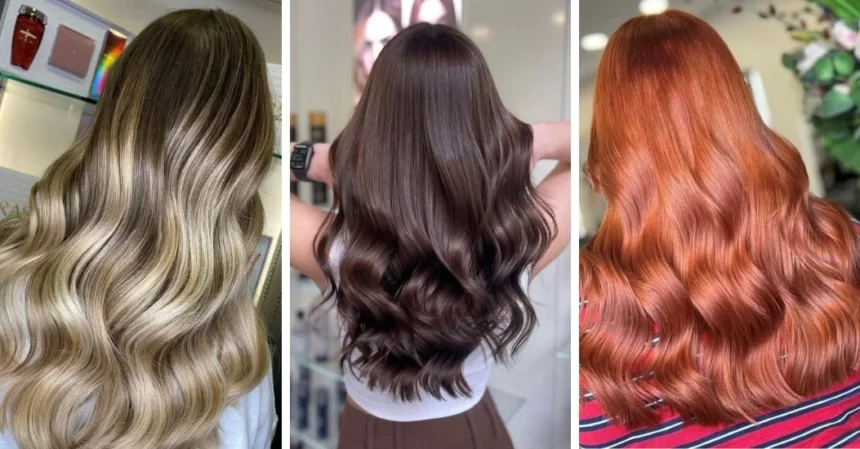Caring for your hair properly starts with understanding its texture. Hair texture refers to the thickness, shape, and overall feel of each strand, and it plays a significant role in how your hair behaves and responds to different products and styling techniques. Whether you have straight, wavy, curly, or coily hair, knowing how to care for your unique texture is key to maintaining healthy, beautiful locks.
In this guide, we’ll break down the different types of hair textures and offer tips on how to care for each. We’ll also dive into common misconceptions and offer some practical advice that can help improve your hair care routine.
The Different Hair Textures
Hair texture typically falls into four broad categories: straight, wavy, curly, and coily. Each texture comes with its own set of challenges and benefits, so understanding what works best for your specific type is essential.
1. Straight Hair
Straight hair tends to be smooth and has a natural sheen because the natural oils from the scalp can easily travel down the hair shaft. However, it can also become oily more quickly than other hair types because of this.
Care Tips for Straight Hair:
- Shampoo Wisely: Because straight hair can become greasy easily, it’s important to choose a lightweight, sulfate-free shampoo that won’t strip your hair of its natural oils.
- Avoid Heavy Conditioners: Using a heavy conditioner can weigh down straight hair, making it look flat. Opt for a light, volumizing conditioner that won’t cause buildup.
- Add Texture: If you want to add volume or texture, consider using dry shampoo or a texturizing spray. This will give your hair more body without weighing it down.
- Watch for Oiliness: If your scalp tends to produce more oil, wash your hair every two days to keep it fresh and manageable.
2. Wavy Hair
Wavy hair strikes a balance between straight and curly, often resulting in loose, flowing waves. Wavy hair has the versatility to be styled in both straight and curly looks, but it can sometimes fall flat or become frizzy, especially in humid climates.
Care Tips for Wavy Hair:
- Hydrate Regularly: Wavy hair can be prone to frizz, especially in dry or humid conditions. Use a hydrating shampoo and conditioner to keep your waves defined and smooth.
- Use a Lightweight Mousse: A lightweight mousse or curl-enhancing cream can help add definition to your waves without making them stiff or crunchy.
- Avoid Over-Brushing: Brushing wavy hair can disrupt the natural wave pattern and lead to frizz. Instead, use a wide-tooth comb or your fingers to gently detangle your hair while it’s wet.
- Diffuse or Air-Dry: To enhance your waves, consider air-drying your hair or using a diffuser on your blow dryer. This will help maintain the natural texture without causing frizz.
3. Curly Hair
Curly hair features a more defined, spiral-like pattern. It can range from loose curls to tight ringlets, and while it has beautiful volume and shape, curly hair often faces issues with frizz, dryness, and tangling.
Care Tips for Curly Hair:
- Moisturize Often: Curly hair tends to be drier because the natural oils from the scalp have a harder time reaching the ends of the hair. Use deep conditioning treatments regularly to keep your curls hydrated.
- Use a Curl Cream: A curl cream or gel can help define your curls and minimize frizz. Apply it to damp hair and let your hair air-dry or use a diffuser.
- Detangle Carefully: Curly hair is prone to breakage, so use a wide-tooth comb to detangle your hair while it’s wet and coated with conditioner.
- Avoid Heat Styling: Heat can be particularly damaging to curly hair, so limit the use of flat irons and blow dryers. If you do use heat, apply a heat protectant first.
4. Coily Hair
Coily hair, also known as kinky hair, has tight curls or coils that form an “S” or “Z” pattern. This texture is often the most fragile, as the tight curl pattern makes it difficult for the scalp’s natural oils to travel down the hair shaft. Coily hair can be prone to dryness, breakage, and shrinkage, but with the right care, it can thrive.
Care Tips for Coily Hair:
- Deep Conditioning: Regular deep conditioning treatments are essential for keeping coily hair hydrated and soft. Look for conditioners with natural oils like shea butter, coconut oil, or avocado oil.
- Protective Styles: To minimize breakage, consider protective styles like braids, twists, or buns. These styles help protect the ends of your hair and reduce the need for daily manipulation.
- Limit Washing: Coily hair doesn’t need to be washed as frequently as other hair types. Washing once a week or even every two weeks is sufficient to keep your hair clean without stripping away necessary moisture.
- Use Oils: Incorporate oils into your routine to lock in moisture. Coconut oil, castor oil, or jojoba oil can help seal the hair shaft and prevent dryness.
Common Hair Texture Myths
Hair texture is often misunderstood, leading to common myths and misconceptions. Let’s clear up some of these misunderstandings:
Myth 1: Oily Hair Doesn’t Need Conditioner Even if your hair is prone to oilinsaloess, conditioner is still necessary to maintain a healthy scalp and nourish the ends of your hair. The key is to apply conditioner only to the mid-lengths and ends, avoiding the scalp area.
Myth 2: Brushing Your Hair Often Keeps it Healthy Over-brushing your hair, especially if it’s wavy, curly, or coily, can cause breakage and disrupt your natural texture. Instead, limit brushing and use your fingers or a wide-tooth comb for detangling.
Myth 3: Heat Protectants Aren’t Necessary for Thick Hair Even if your hair is thick and resilient, heat styling can still cause significant damage over time. Always use a heat protectant before using any hot tools, regardless of your hair texture.
Adapting Your Hair Care Routine to NYC’s Climate
Living in a bustling city like New York City can expose your hair to various environmental stressors, from pollution to humidity. The climate can also play a big role in how your hair behaves, especially when you’re dealing with humidity in the summer and dry air in the winter.
- Combatting Humidity: Frizz is a common issue in humid environments. If you’re struggling with frizz, especially during New York City’s muggy summers, consider incorporating anti-frizz serums or lightweight oils into your routine.
- Managing Dryness in Winter: The cold, dry winter air can strip your hair of moisture, making it brittle and prone to breakage. Deep conditioning treatments and leave-in conditioners can help replenish moisture during the colder months.
Personalized Hair Care for Every Texture
When it comes to hair care, personalization is key. Visiting a hair salon in Manhattan, like Mure Salon NYC, allows you to get expert advice on products and treatments tailored to your specific hair type. Whether you’re looking to define your curls, smooth your straight hair, or add moisture to dry, coily strands, a professional stylist can help guide you toward the best routine for your texture.
Conclusion
Understanding your hair texture is the first step toward building a hair care routine that works for you. By identifying whether your hair is straight, wavy, curly, or coily, you can choose products and techniques that enhance your hair’s natural beauty and keep it healthy. Incorporating proper hydration, gentle detangling, and heat protection can make a world of difference, no matter your hair type.
Ultimately, personalized care is the best way to ensure that your hair looks and feels its best, and consulting with professionals at a trusted hair salon in NYC can give you the guidance you need to create a routine that works for your lifestyle and texture.


